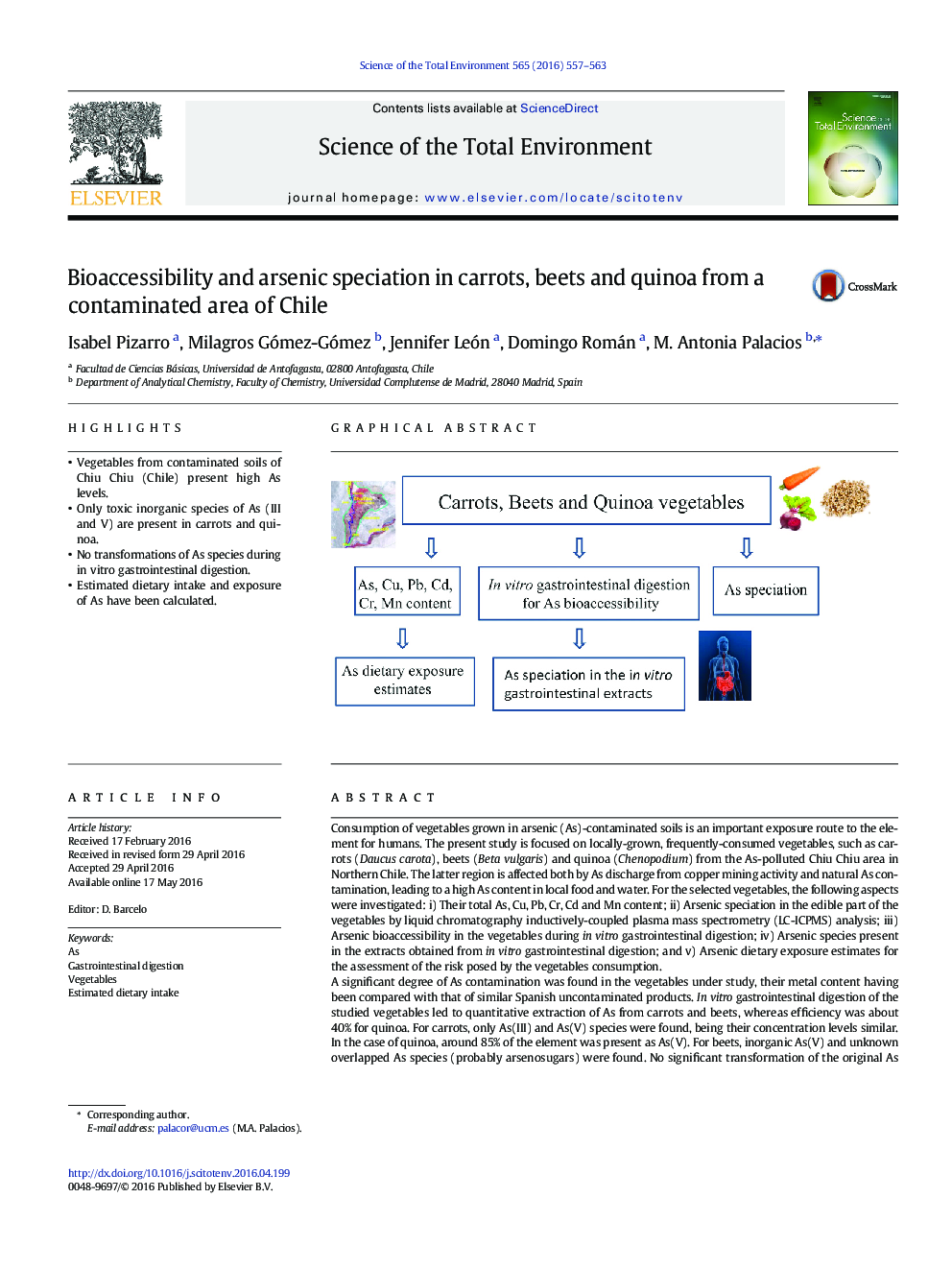| کد مقاله | کد نشریه | سال انتشار | مقاله انگلیسی | نسخه تمام متن |
|---|---|---|---|---|
| 6322034 | 1619724 | 2016 | 7 صفحه PDF | دانلود رایگان |
- Vegetables from contaminated soils of Chiu Chiu (Chile) present high As levels.
- Only toxic inorganic species of As (III and V) are present in carrots and quinoa.
- No transformations of As species during in vitro gastrointestinal digestion.
- Estimated dietary intake and exposure of As have been calculated.
Consumption of vegetables grown in arsenic (As)-contaminated soils is an important exposure route to the element for humans. The present study is focused on locally-grown, frequently-consumed vegetables, such as carrots (Daucus carota), beets (Beta vulgaris) and quinoa (Chenopodium) from the As-polluted Chiu Chiu area in Northern Chile. The latter region is affected both by As discharge from copper mining activity and natural As contamination, leading to a high As content in local food and water. For the selected vegetables, the following aspects were investigated: i) Their total As, Cu, Pb, Cr, Cd and Mn content; ii) Arsenic speciation in the edible part of the vegetables by liquid chromatography inductively-coupled plasma mass spectrometry (LC-ICPMS) analysis; iii) Arsenic bioaccessibility in the vegetables during in vitro gastrointestinal digestion; iv) Arsenic species present in the extracts obtained from in vitro gastrointestinal digestion; and v) Arsenic dietary exposure estimates for the assessment of the risk posed by the vegetables consumption.A significant degree of As contamination was found in the vegetables under study, their metal content having been compared with that of similar Spanish uncontaminated products. In vitro gastrointestinal digestion of the studied vegetables led to quantitative extraction of As from carrots and beets, whereas efficiency was about 40% for quinoa. For carrots, only As(III) and As(V) species were found, being their concentration levels similar. In the case of quinoa, around 85% of the element was present as As(V). For beets, inorganic As(V) and unknown overlapped As species (probably arsenosugars) were found. No significant transformation of the original As species was observed during in vitro gastrointestinal digestion. Arsenic dietary exposure values obtained for the three vegetables (0.017-0.021 μg As personâ 1 dayâ 1) were much lower than the JFCFA's safety limit of 50 μg As personâ 1 dayâ 1. Therefore, no toxicological risk would be expected from the intake of these vegetables.
243
Journal: Science of The Total Environment - Volume 565, 15 September 2016, Pages 557-563
